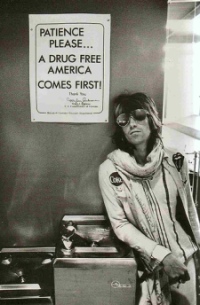
The natural reaction to the acceleration of our daily lives is to yearn for simpler days, simpler times. This is a train of thought inspired by reading John Thackara’s In The Bubble, Designing in a Complex World mixed with listening to Steve Gillmor’s NewsGang Live. In the 1960s there were a number of movements organized to try and get back to the land. Even as the guitar solos became faster and more electric, there was a countervailing movement toward ecology, natural foods and dropping out of the rat race.
As the conversation jumps from the Network’s current supersonic speed to a discussion of real time, there’s an understandable backlash against the idea of always on, always connected and being flooded with information in real time. The naysayers moan that increasing the speed of information to real time will only make things worse. As it is, no one has enough time to sort through the things crying for our attention.
When we talk about the speed of daily life, we’re talking about the number of tasks that need to be completed in a day. By doing these tasks faster, and by finding shorter tasks, we can cram more and more into each day. As more things become available to consume and sort through, we’ll need to get even faster just to keep up.
We’ve become hunter/gatherers filtering the incoming streams looking for nutritious information. But the idea that there’s an infinite number of valuable things waiting for your consumption has always been true. Decisions and priorities have always been the key. It just seems like it’s easier to turn on the fire hose of information these days. A well-stocked library probably has the same potential– each book is a stream of words printed into a folio.
There’s another way to look at the idea of real time. We’ve been thinking of it as a faster sort of clock time; clocks are the basis of speed. But real time also connects to event time, the flow of things that happen during a day. Real time is the time in which a conversation unfolds. We tend to think of the emergency uses of real time — a cry for help and a response of aid. Emergencies are one kind of event, but there are many ways of conversing. Real time can be quite slow… the thoughtful pause before an answer; the interlude of laughter for a well-timed joke; a silence that washes over us as our conversation sinks in and resonates.
Perhaps we don’t notice that the speedy machines of the Network don’t move at the speed of life. They don’t have a sense of the fluidity of time. And the speed we want, is not an acceleration of the heartbeats we have remaining, but rather a speed that results in efficiency and spending less time at our chores. When you imagine the real time web, take a moment and think: what’s the music playing in your head?
2 Comments

